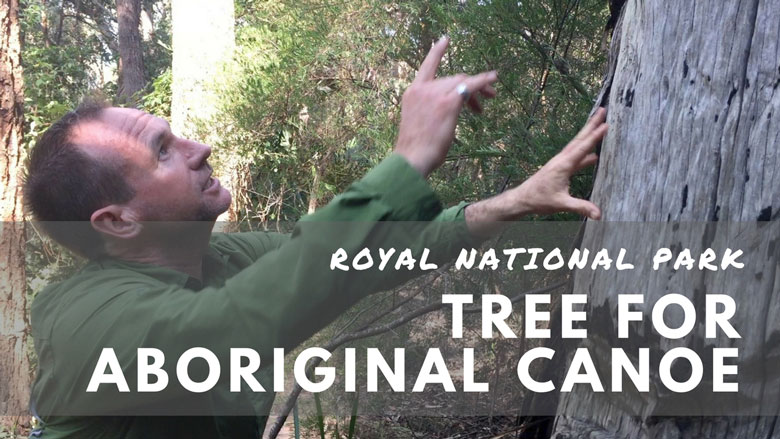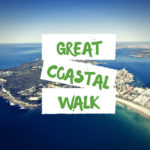Not too far along the track to Figure 8 Pools is one of the best examples of an Aboriginal canoe tree we've seen. It's literally right next to the track but still easy to miss because you have to know what to look for.
Aboriginal Canoes
To know what you're looking for, first you need to understand how tree canoes were manufactured to see the remaining tell-tale signs.
There are no bark canoes surviving from pre-European days but through a strong oral tradition, and period drawings, we know how they were made and used (the Australian Museum in Sydney displays a commissioned Aboriginal canoe).
To build a canoe, or nuwi, the Dharawal people – the traditional inhabitants of the area now known as Royal National Park – looked for a tree with a large trunk and thick bark.
Once found they used a stone tool to cut away a massive single piece of bark. Then, after softening it with fire, they tied it at both ends to make a canoe shape and used sticks, or spars, to keep it open. The resin from Xanthorrhoea (grass tree) was used to waterproof the base and came in handy to repair any leaks or small holes.
This nuwi was then used for fishing. Dharawal people fished the same way we do today, with a hook, line, sinker and lure. A hook, barra, was made by carefully rubbing a turban shell against sandstone to give it the desired shape. The line, garradjun, was a thin strand of plaited bark and hair. The hook and a stone sinker were attached to this line using the gum from the grass tree.
Dharawal people fished in the half light of dawn and dusk when fish are feeding. They had small fires in the bottom of their canoes in shaped stone bowls or mounds of seaweed. They used this fire to light Banksia ericifiolia (heath banksia) flower spikes which they hung over the side of the canoe to attract fish. The flame reflected off the mother of pearl in the turban shell. Larger fish perceived this flash of light to be a smaller fish, and swallowed the hook. The fishermen and women cooked and ate fish in the canoe until they'd caught enough to take back to camp for breakfast.
How to Spot a Scarred Tree
The canoe tree we're talking about is literally right next to the Burgh Track on the way down to Figure 8 Pools. It's an easily accessible example of a tree used to make an Aboriginal canoe… but it's not the only one of it's kind. This type of tree can be found all through coastal bushland, so here's what you're looking for.
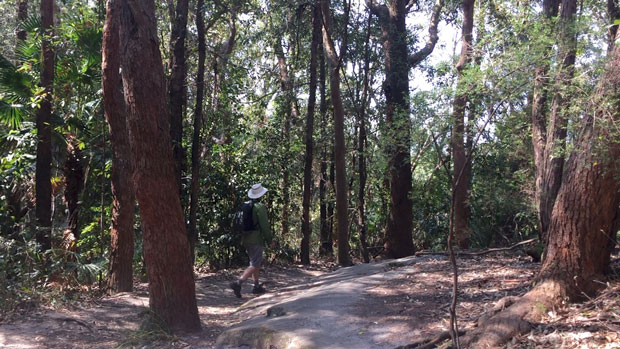
Look towards the right hand side of the track. This is the base of the scarred tree. It doesn't seem remarkable, and with another shrub growing in front, it's easy to miss. But look again. Ahh, now you can see the stone wedge marks.
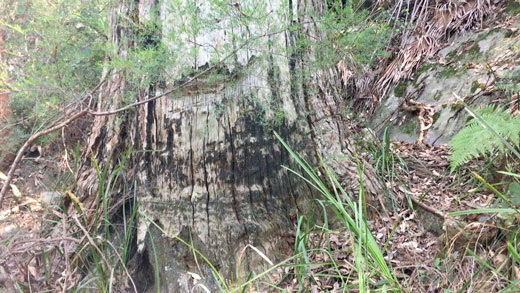
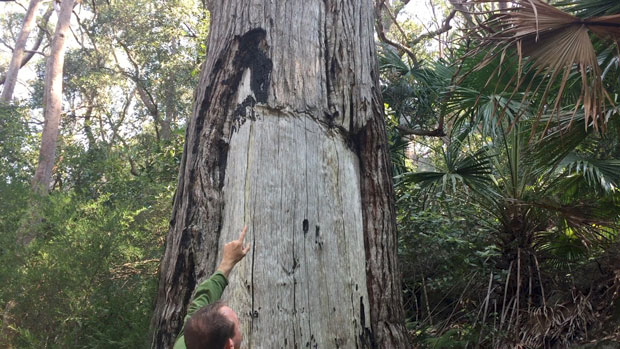
Please remember scarred trees are living reminders of a culture that has thrived in Australia for over 50,000 years. Some of them are sacred. Please show your respect by not altering them in any way.

